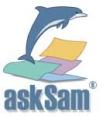I've been using Legacy since 2002, starting with Version 2.x, and liked it a lot, so I've used it ever since. I got the deluxe version at version 5, but found that the versions ran ahead of my hardware, and so each new version seemed to require more resources than my current computers had. Eventually I got a new computer with enough memory to handle version 7.0, but then the deluxe features no longer worked, and I thought I would wait for version 8 before lashing out on the deluxe version again.
The first thing I noted was that it works.
It didn't bomb out on my computer because there was not enough memory or anything like that.
The second thing was that it seemed to work faster than version 7.5.
That indicates that a lot of the code must have been cleaned up and optimised, which is usually a good thing.
 The user interface is different, with several menu items in different places from the ones where I was used to looking for them, but they are not too difficult to find, and things seem to work pretty well. The display is easier to configure to one's taste, and there are helpful messages about where to add children and parents. It also displays half-brothers and sisters, which is a nice touch.
The user interface is different, with several menu items in different places from the ones where I was used to looking for them, but they are not too difficult to find, and things seem to work pretty well. The display is easier to configure to one's taste, and there are helpful messages about where to add children and parents. It also displays half-brothers and sisters, which is a nice touch.There were also some disappointments.
One of the first things I tested on it was a direct GEDCOM import, which failed.
That was one of the things I've been hoping they would fix since version 3.
I use another program for my initial data entry, and will continue to do so until Legacy manages to make it easier to export and import a specific range of RINs.
In this case I exported RINs 17772-17818 from the other program -- 47 records. Legacy scrambled them on import, so that 17780 became 17818. Not good.
Fortunately Legacy lets you undo the import, and I imported the GEDCOM file into PAF 4.0, and imported the PAF 4.0 file directly into Legacy, which worked fine, with all the RINs in their correct order. But it's a pity that Legacy makes it a two-stage process, rather than correctly importing a GEDCOM file directly (if PAF 4.0 can do it, why can't Legacy 8.0?)
The second disappointing thing was that Legacy 8.0 seems to keep its files all over the place.
Earlier versions let you install Legacy in a Legacy directory, and under that was a data directory and a pictures directory, so you could back it all up in one fell swoop. And you could copy the data files easily so that you could use them on a desktop and a laptop computer copying them back and forth with no problems.
That is still possible, just, with Legacy 8, because it lets you change the default installation directory which is C:\program files\Legacy8.
So I changed to to E:\Legacy8.
I like my programs where I can see them.
It also lets you set default directories for data, but perhaps I was too late, or did something wrong. So the program is on one drive, the data on another, and pictures etc on a third, and user parameters somewhere else, under \Legacy Family Tree\_Attributes. I hate directory paths with spaces in them.
That all gets way too complicated, and I wish they'd kept the simple scheme of previous versions.
So I'll have to see how easy it is to transfer my data to my laptop to take to archives and libraries for research. If it's too difficult I might revert to version 7.5.
But what's important to me may not be so important to you, and apart from these drawbacks it's still a nice program, so why not go to the Legacy Family Tree web site and have a look?






